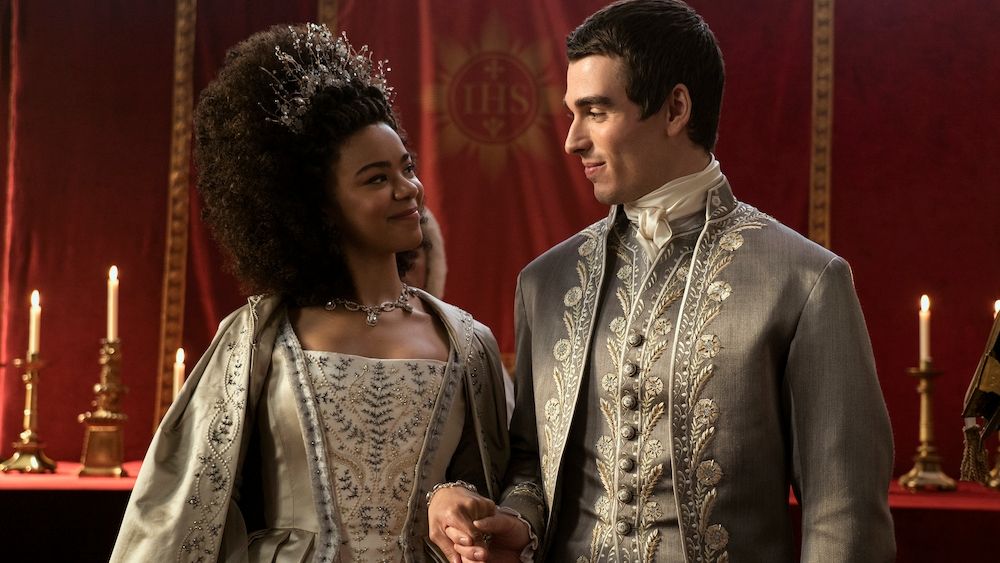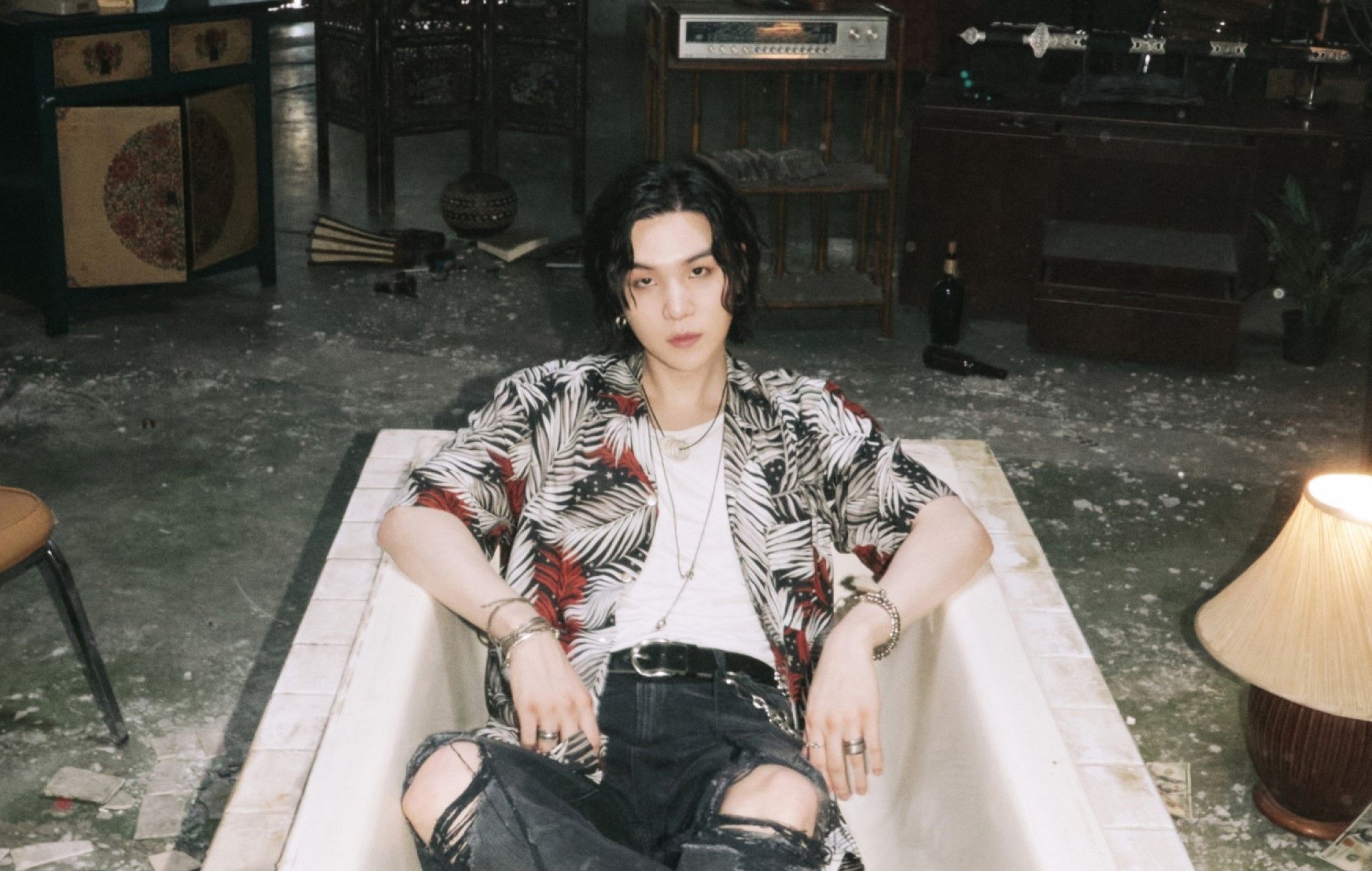'Queen Charlotte' Cast on Sex Scenes, Mental Health in 'Bridgerton' Spinoff
SPOILER ALERT: This story contains spoilers from “Queen Charlotte: A Bridgerton Story,” now streaming on Netflix.
“Queen Charlotte” may be an extension of the “Bridgerton” universe, but its brand-new story by Shonda Rhimes is quite different, with a much more serious tone.
“The series in itself is like a different beast,” says Corey Mylchreest, who portrays young King George III in the Netflix drama. “It feels like ‘Bridgerton’ but it has maybe darker moments to it, and it’s a little bit grittier. So it feels like its own thing.”
The story of Queen Charlotte and King George III was briefly touched on in Season 2 of “Bridgerton,” but this prequel dives in to the origin story of a young Charlotte (India Amarteifio) as she embarks on her arranged marriage to a young King George. Charlotte’s fearlessness — especially as a Black woman marrying the King of England — changes the country, under the auspices of what the show calls “The Great Experiment.”
Meanwhile, her husband spends most of his time in hiding due to an unidentified mental illness. In real life, King George III was never specifically diagnosed. He suffers from manic symptoms including hallucinations and both physical and emotional pain.
“As a show, we don’t diagnose him, but as an actor, I simply had to make a decision. Otherwise, the work is going to be nonspecific, and it can be offensive. I did a lot of research and I had an idea of what it was, learning about his childhood and how that can affect stuff,” says Mylchreest.
He worked closely with director Tom Verica, and spoke with a specialist about George’s affliction — about what triggers certain behavior, when and why.
“It’s a gift as an actor, because it’s such a challenge but it doesn’t afford you anything other than permission to go 100%. If you don’t commit fully, then you’re going to almost offend the honor of the character — both that Shonda has written, and the real guy that I fell in love with when I did my research,” Mylchreest says. “It’s a man who is dealing with the subsequent shame and self-hatred that comes as a result of that affliction.”
Queen Charlotte: A Bridgerton Story. Corey Mylchreest as Young King George. LIAM DANIEL/NETFLIX
As in any “Bridgerton” series, the love story is at the center — so the chemistry between the leads is a must. And yes, that means sex scenes. For Mylchreest and Amarteifio, creating that was an easy part as their character’s closeness changed as the show went on. At first, they only had sex on even days, strictly to try to create an heir. As they continue, their physical closeness develops into real intimacy and love.
“I don’t think it would be a very good show, but even if it was just the intimate scenes between George and Charlotte, you would have a story. You’d have an arc; you’d have a beginning, middle and end,” says Mylchreest, thanking intimacy coordinators Lucy Fennell and Lizzie Talbot. “‘Bridgerton,’ in the past, has been has been criticized for having those intimate scenes gratuitously. Something that we’re really proud of is that it’s not the case here at all.”
Still, “it was very nerve-racking,” he says. “I also realize that I’m saying that as a man on a set with a male director, and I’m feeling nervous, so you know that that speaks to the environment — or the maybe the stigma around it at the moment. India was so brilliant, and I think we built such as such a sense of trust that it had its own arc for us in a way.
“The first one was a real nerve-racking experience, and by the end of it, it was like, ‘Let’s crack this one out!’ It was very easy.”
Amarteifio echoed Mylchrees’ sentiments, noting that not only were they comfortable in the scenes, but also felt secure enough to have discussions about the specifics that might have been uncomfortable.
“They created such a safe space and making us feel as if we actually had a say in some of these scenes. You walk into a room sometimes, and it’s one thing to say, ‘Yeah, you can you can speak freely.’ It’s another thing of actually feeling that,” says Amarteifio. “Everything is in there for a reason. It’s a testament to our team and to Shonda, everyone being just genuine, lovely people and remembering that this is a show and it’s for storyline. We don’t put things in just for the sake of it.”
Arsema Thomas as Young Agatha Danbury and Peyvand Sadeghian as Coral in “Queen Charlotte: A Bridgerton Story.” NICK WALL/NETFLIX
Young Agatha Danbury (Arsema Thomas) had a powerful — and unique — journey of her own over the course of the season, first in a marriage in which she’s strictly performing her wifely duty, and then eventually having an affair that allows her to find her own sexual awakening. For Thomas, the preparation took around six months.
“The greatest thing to recognize was that Agatha is not a stagnant person. Over the course of every episode, she changes her mind and her point of view. She becomes more self-aware,” says Thomas, who read dozens of books about Black women finding their power, and spoke with women in her family about the arc before filming began. “I got waist beads made for that, that I wore throughout the course of filming that just helped me ground her in a sense of femininity on something that was rooted in her culture.”
Following the death of her husband (Cyril Nri), Agatha began an affair with Lord Ledger (Keir Charles), finally living her life for herself.
“She didn’t even think it was a possibility for her to even enjoy sex. In her mind, this is something that you do to make babies, this is what you do as a wife. It’s like embroidering pillows and chatting about tea,” Thomas says. “For her to kind of fully embrace her agency, her power and herself — to recognize that she can say no, to recognize that she can ask for what she wants, to recognize that she also just deserves sexual pleasure, is such a beautiful thing to be able to discover in front of the camera.”
When it came to filming love scenes, Thomas had two very different types — “one that is based on passion, and one that is devoid of it.” However, she was able to feel the same level of ease in both.
“It was so well-detailed as more of a dialogue than ‘sex’ in big capital letters,” she says. “There was just something really great about having that space to to be able to get comfortable, and having great scene partners who were also checked-in constantly. When the director says cut and we’re done, we’re back to being Arsema and Keir, or Arsema and Cyril — I think it’s one of the greatest things. Compartmentalization saves lives!”
Source: Variety


